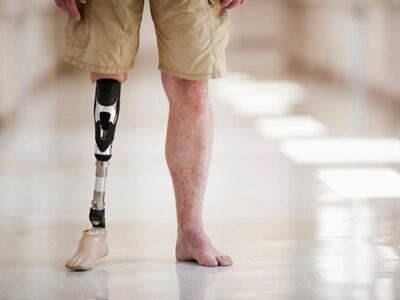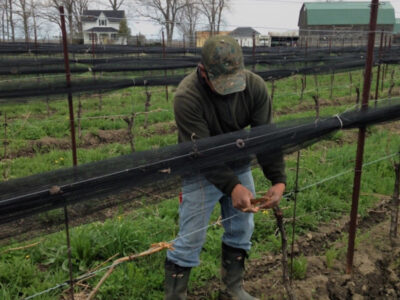The workplace injuries that cost employers the most money are those involving the head and nervous system. However, as much as such an injury may cost your employer, it is likely you are the one who pays the higher price. An injury to your head, including your eyes, can change your life forever by robbing you of independence and other blessings too precious for a price tag.
It may be surprising for you to learn that head and eye protective equipment are the very last resort in a workplace environment. Nevertheless, personal protection equipment is a requirement in many situations, and your employer should provide you with PPE that is adequate, appropriate, and well-maintained.
PPE in the Hierarchy of Controls
The U.S. Occupational Safety and Health Administration (OSHA) establishes a protocol of best practices for protecting workers. If you are unaware of the term “hierarchy of controls,” you may want to meet with your employer to understand how it affects your line of work.
In most industries, the top of the hierarchy is to eliminate the risks involved in a task. For example, if you can replace a toxic chemical with an equally effective but less toxic substance, you have eliminated the hazard. If you cannot eliminate the hazard, your employer should investigate ways to engineer it out so you do not have to concern yourself with its danger. In other words, is there a way to physically change the task, such as adding safeguards to a machine, so the hazard is not in your way?
The Last Step in the Hierarchy: PPE Requirements Under OSHA and ANSI Standards
If PPE is the only alternative, you certainly want to be sure that the equipment you use will protect you from the hazard. It is not enough for your employer to hand you a hard hat and send you off to work. Each task may require specific equipment, and each type of equipment entails training for its proper use. Training involves how and when to wear it as well as how to maintain the equipment for optimal efficacy, for example:
- Keeping PPE from sunlight when not in use
- Cleaning PPE regularly
- Inspecting for cracks, wear, and other damage
- Inspecting straps for wear or fraying
- Inspecting eye protection for cracks or damage
Worn or damaged head and eye protection may be worse than using no protection at all. If your equipment is old or shows signs of failure, your employer should immediately provide a replacement.
PPE Standards for Head and Eye Protection:
- ANSI Z89.1: Standard for industrial head protection (hard hats)
- ANSI Z87.1: Standard for eye and face protection (safety glasses, goggles, face shields)
- NIOSH Approval: Certification for respiratory and some head protection gear
OSHA and Cal/OSHA Legal Requirements for PPE
Under OSHA 29 CFR 1910.132 and 1910.133, employers must:
- Conduct a hazard assessment
- Provide appropriate PPE at no cost
- Train workers on proper use and care
- Replace defective or expired PPE
Cal/OSHA Title 8, Section 3380 reinforces these standards in California, adding requirements like PPE fit-testing and documentation in hazard assessment files.
Employers in California may also face penalties for violations, with OSHA fines for serious violations reaching $15,625 per violation (2024).
Real-World Examples: The Human Cost of Inadequate PPE
- A California machinist lost vision in one eye due to a defective face shield that failed during grinding operations. Despite having PPE, the lack of maintenance and training left him unprotected.
- A roofer in Los Angeles suffered a traumatic brain injury (TBI) when a fall protection harness snapped due to worn-out straps, an issue that could have been avoided with proper inspection.
These cases highlight the need for ongoing PPE training, equipment inspections, and legal protections for injured workers.
The Financial and Legal Impact of Head and Eye Injuries
Head and eye injuries often result in:
- Medical expenses exceeding $100,000+
- Long-term disability and loss of earning capacity
- Emotional trauma and family hardships
Workers in California have legal rights under Labor Code Sections 6401-6404, requiring employers to provide a safe workplace. If an injury occurs, workers may be eligible for:
- Workers’ compensation benefits
- Temporary and permanent disability payments
- Third-party liability claims (if faulty equipment contributed)
High-Risk Industries for Head and Eye Injuries
While PPE is essential across sectors, certain industries face higher risks:
- Construction (falls, falling objects)
- Manufacturing (machinery hazards, flying debris)
- Welding and Fabrication (UV radiation, sparks)
- Oil and Gas (chemical exposure, impact hazards)
- Warehousing (forklifts, shelving collapses)
FAQs: Your Questions About PPE, Injuries, and Legal Rights
What types of PPE protect against head and eye injuries?
Hard hats (ANSI Z89.1), safety glasses and goggles (ANSI Z87.1), face shields, and welding helmets, chosen based on hazards.
Can I file a claim if my injury happened despite using PPE?
Yes. Workers’ comp covers medical bills and lost wages. If faulty PPE contributed, a third-party claim may also be possible.
How can I tell if my PPE is defective?
Look for signs like cracks, fraying straps, faded labels, and missing certification marks (e.g., ANSI/NIOSH).
What are California’s laws for workplace safety?
Employers must follow Cal/OSHA rules (Title 8) and provide hazard-specific PPE. Failure to comply can lead to fines and legal claims.
How can a lawyer help after a head or eye injury at work?
A lawyer can help file a workers’ comp claim, ensure maximum benefits, and pursue third-party lawsuits if applicable.
Have You Suffered a Head or Eye Injury at Work?
Don’t let unsafe equipment or lack of training leave you unprotected. At Hussain & Gutierrez, we advocate for
California workers injured on the job, whether it’s a traumatic brain injury, vision loss, or another life-altering condition.
Contact us today for a free consultation: Hussain & Gutierrez Workplace Injury Attorneys



